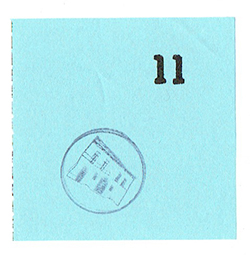My job as Associate Director of the University of Georgia’s International Residence Center in Cortona, Italy requires me to travel constantly with our students. Every semester begins in either Rome or Naples, where we spend 3-4 days visiting local historical sites, museums, and churches. We usually take a 2-3 day trip to Florence or Venice around the middle of the semester, and in between these overnight trips we take weekly day-long excursions all around the region: Assisi, Perugia, Arezzo, Montepulciano, San Gimignano, Lucca, Pisa, Pienza, Volterra, Siena, Tarquinia, Urbino. On these excursions, I leave my office behind and my normal responsibilities of answering e-mails, making spreadsheets, and solving facilities problems are put on hiatus. I am able to enjoy the places we visit as much as the students do, and I have time to draw.
This job also gives me an incredible gift: the knowledge that I will return to these same places, these same inspiring museums and monuments, over and over again in the coming years, each time with a new group of students who will see them, with awe and wonder, for the very first time. No longer do I have to hurry through a museum, wanting to see everything and knowing that I only have a few hours to do so, and therefore feeling the pressure to move on and not linger long over any one object. Now I have the luxury to move at my own pace, to stay for hours in front of one painting and study it in depth. I can wallow in time, I can draw, make notes, contemplate.
I call this slow exploration of sites my “Slow Museums Project” and it works like this: I move through museums systematically, starting at the entrance, and I allow myself as much time as I want to examine the objects. I keep a sketchbook in which I begin drawings of the objects that interest me. I work on those drawings as long as I feel inspired by them, and then I move on, even if the drawing is unfinished. When the time comes to leave the museum, I make a note of where I am — it might even still be the first room! Then, three or four months later, when I return to this museum with a new group of students, I bring the same sketchbook and pick up where I left off, sometimes working again on drawings that I left unfinished from the last time. Because I find it interesting to see what I add each time I visit, I began to scan the sketchbook pages and document the layers of each drawing.
To look into my Slow Museums sketchbooks, click on the ticket below:
